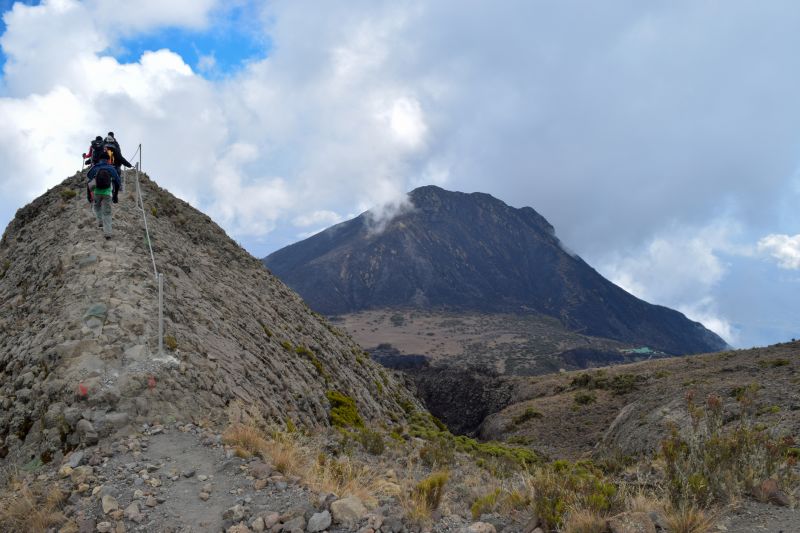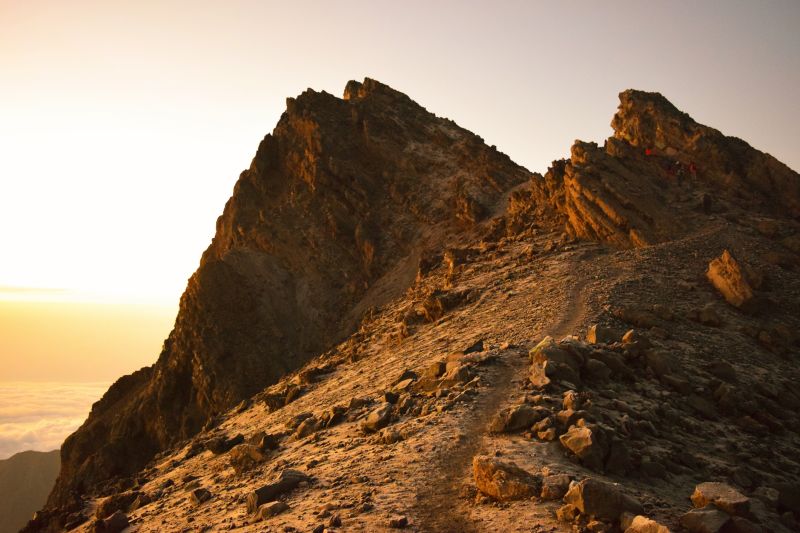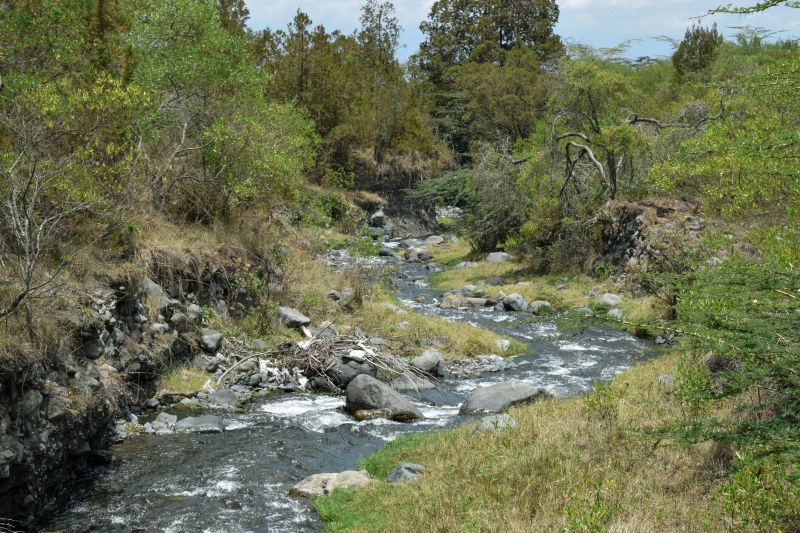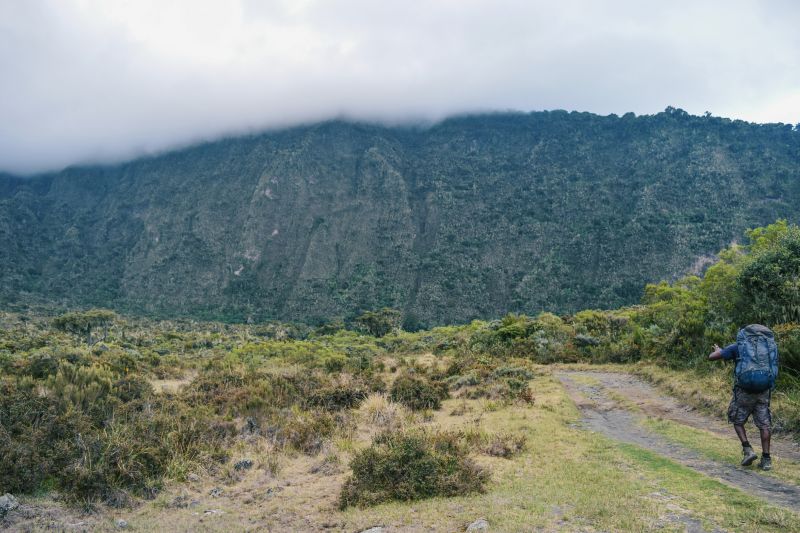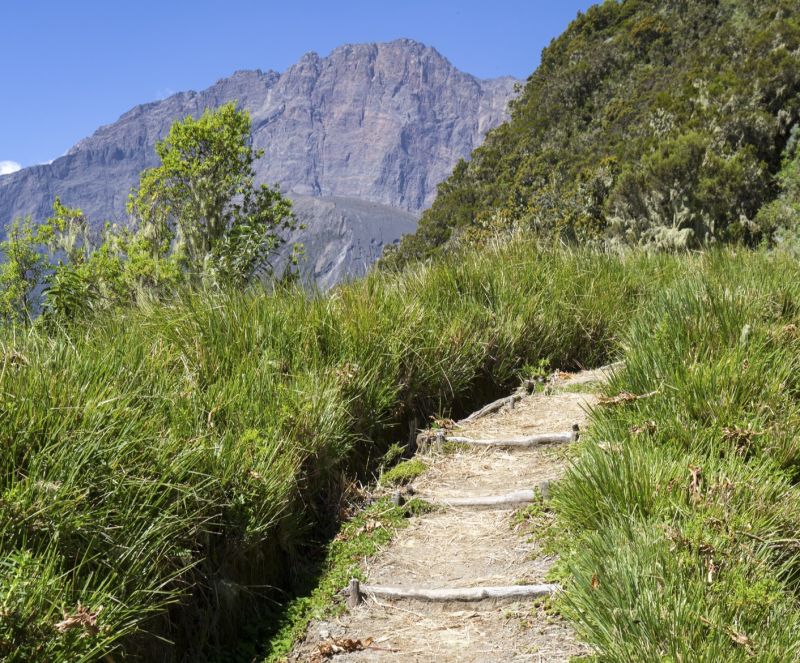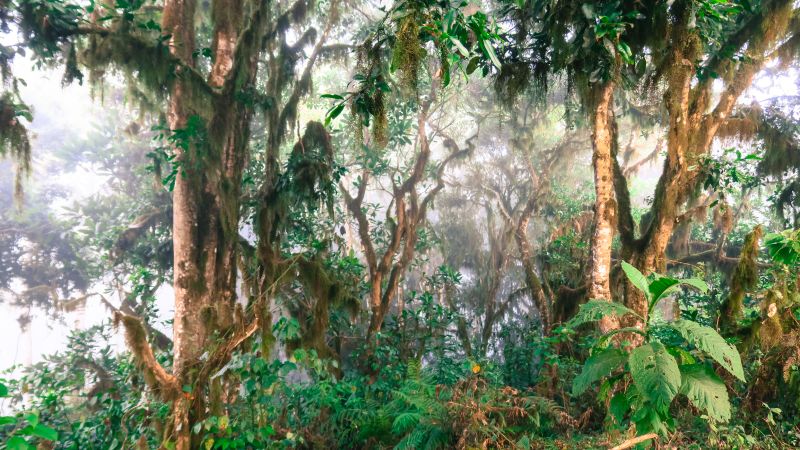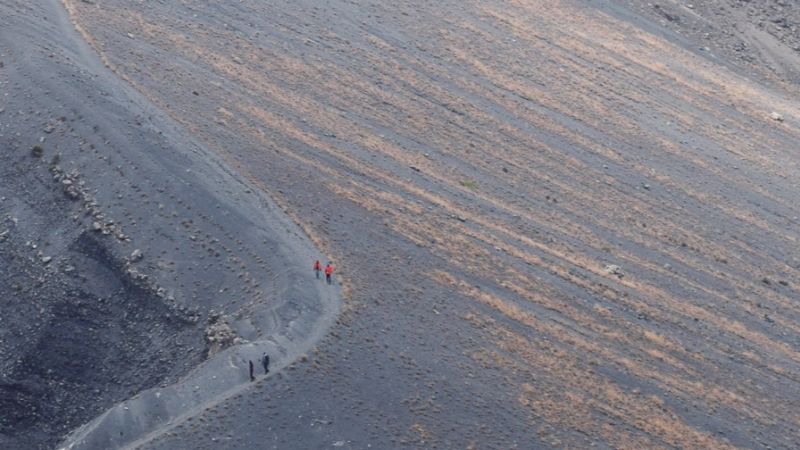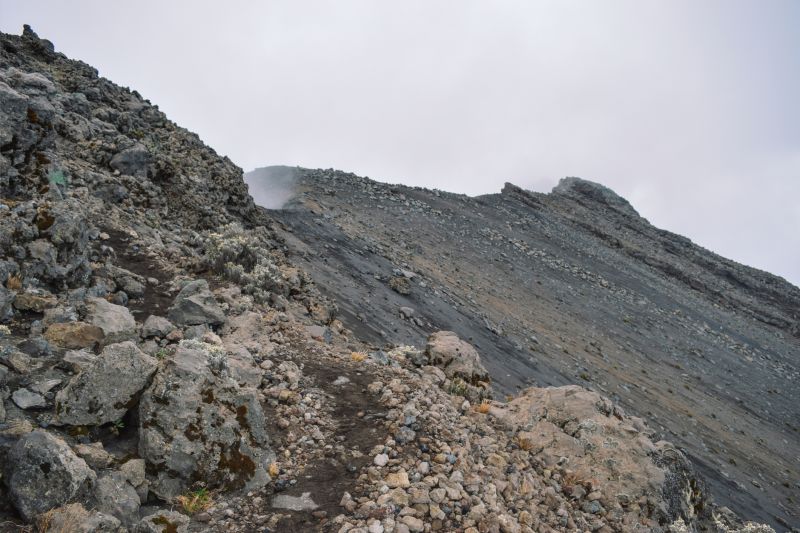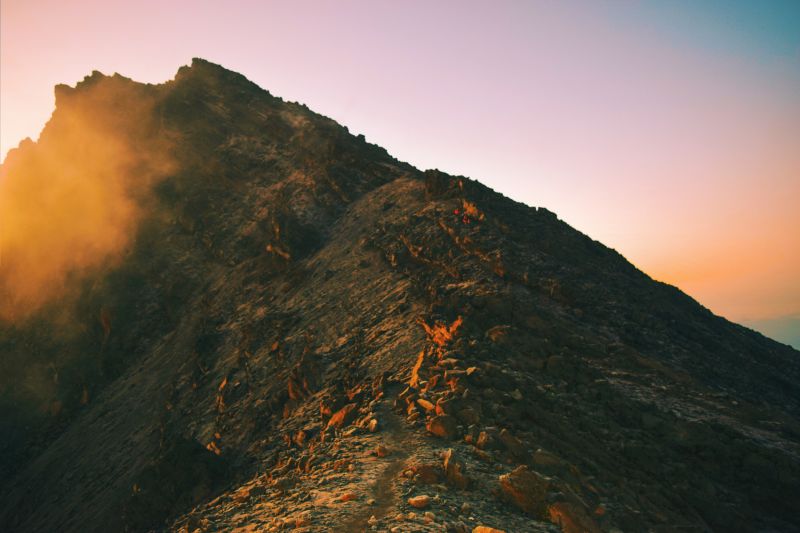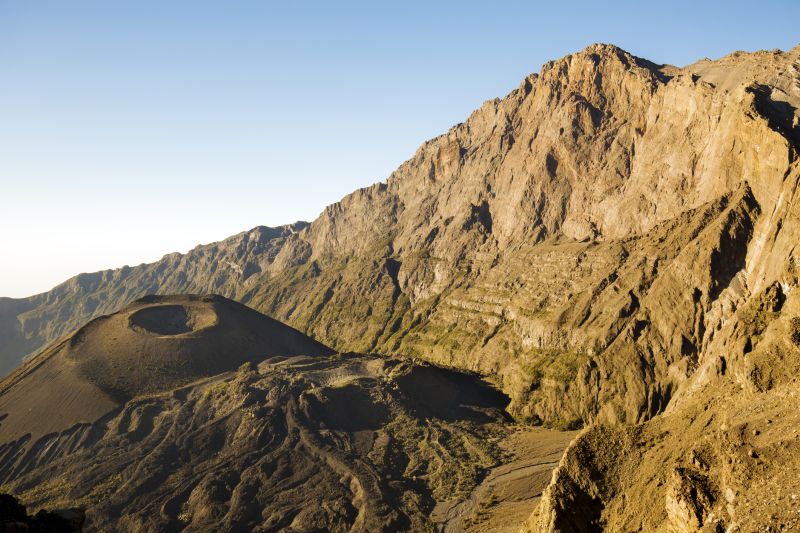Basic facts
- Duration: 3 or 4 days
- Distance: About 43 km (27 miles)
- Start elevation: 1,500 m (4,921 ft)
- Summit elevation: 4,562 m (14,967 ft)
- Altitude gain: 3,062 m (10,046 ft)
Look for the tiny trekkers in this pic for a sense of scale
You need good hiking fitness
You need to be pretty fit to manage a Mt Meru climb and make it to the summit. All of the days save for the last are predominantly uphill, with plenty of steep and sometimes tricky sections.
While on Day 2 you must cover just 4 km (2.5 miles) – though don't forget the strain of the altitude, which we discuss in a moment – on Day 3 you must hike 24 km (15 miles). So you need to be comfortable walking long distances on back-to-back days.
Each day on a Mt Meru climb is challenging in different ways, but the challenge awaiting you on summit day is BIG.
Here's a breakdown of the four-day Meru climb as offered by us at Follow Alice:
Day 1: Hike to Miriakamba Hut
On the first day you ascend from about 1,500 to 2,470 m (4,921 ft to 8,104 ft) above sea level, hiking for about five to six hours and covering 10 km (6 miles).
Day 2: Hike to Saddle Hut (4 km)
On this day you ascend another vertical kilometre to reach Saddle Hut at 3,570 m (11,713 ft). This takes about three to five hours and you cover about 4 km (2.5 miles). This might not seem far but today is when you should start to feel the impact of the high altitude, though hopefully not too badly.
We advise that you also do the short acclimatisation hike to Little Meru in the late afternoon, which will take you up to 3,820 m (12,533 ft). The view from Little Meru is lovely, but another reward is that you should manage better on summit day having already introduced your body to a higher elevation.
Visiting Little Meru then sleeping at Saddle Hut will speed up your acclimatisation
Day 3: Summit day (20 km)
Socialist Peak (the highest point on the rim of Meru's crater) is 4,566 m (14,980 ft) above sea level, so once again you climb over a vertical kilometre today! But today you can expect the altitude to be far more taxing on the body.
Further to this, you're going to wake up at around 2 am on summit day and do most of the ascent guided only by your headlamp (flashlight), unless there's a full moon.
The goal is to reach the summit of Mt Meru around sunrise
On top of all that, you must also start the descent after reaching the summit. In fact, you must hike all the way back down to Miriakamba, where you spend your first night. You can expect to be on your feet for around 12 to 15 hours today and cover 20 km (12.5 miles) in total.
So all of these things combined make for a truly BIG day of trekking. In fact, summit day alone makes climbing Mt Meru a very challenging adventure, and not everyone who sets out for Socialist Peak is able to manage it.
Summit day on Meru involves walking in the dark, dealing with the fatigue that accompanies very high altitude, and hiking for 12 to 15 hours.
Day 4: Descend to Momella Gate
Today you descend the final short distance to Momella Gate, either the same way you ascended or via a slightly longer and very pretty alternative route. Either way, your lungs will be drunk on the oxygen-rich air and you'll be feeling incredible for that as well as the sense of achievement!
Mt Meru is located inside Arusha National Park
You need a head for heights
You actually need more of a head for heights for climbing Meru than you do for Kilimanjaro.
Are we serious? Yes, because while some Kilimanjaro routes see you tackle the Barranco Wall (which can be dauntingly precipitous for some), Africa's highest mountain is actually crisscrossed with relatively wide and safe footpaths. Meru, on the other hand, has some narrow sections where a tumble could be quite dangerous.
You might wish to reconsider climbing Mt Meru if narrow contour paths and ridges make you nervous.
Let's paint a picture of the trail you climb on Meru to help you get a sense of how the path, which varies greatly but certainly has its fair share of vertiginous moments ...
Sometimes on Meru you walk a wide, flat path that's safe for a toddler
Then there are some 'stepped' sections
There are also forest paths, where things can become slippery with rainfall
But higher up there are some contour paths carved into steep slopes
The ground underfoot can be rocky and uneven
And there are sections with sharp drop-offs on both sides
The narrow ridge between Rhino Point and the summit of Socialist Peak does, in fact, need to be tackled with extra caution. If conditions are too icy or windy, some trek guides won't actually allow their clients to proceed along this section of the trail. (On a related topic, you might like to read When is the best time to climb Mt Meru?)
Don't underestimate the altitude
One of the critical aspects that makes climbing Mt Meru challenging is the high altitude.
You should expect your breathing to be more laboured on summit day given the high altitude.
Summit day is made more challenging by the taxing effect of high altitude
While the mountain isn't nearly as high as Mt Kilimanjaro, meaning you're unlikely to develop serious altitude sickness, the elevation reached on summit day is enough to make it possible.
What's more likely, however, is that you develop mild altitude sickness. Common symptoms of mild altitude sickness are a headache, nausea and even dizziness. Mild altitude sickness isn't serious and you can push on in spite of it. But it will mean that you find the day's trekking that much tougher.
We recommend that you pack some medicines for combatting the negative side effects of high altitude, and we discuss these in Your complete Mt Meru packing list.
Part of the rim of Mt Meru as well as its ash cone as seen from Rhino Point
So there you have it – Mt Meru is a tough but doable (and highly rewarding!) multiday trek that we encourage you to take on provided you are fit, have a head for heights, and feel able to deal with some altitude-related discomfort.
Still have questions? Please feel free to reach out to us and we'll happily chat through it all some more with you!




